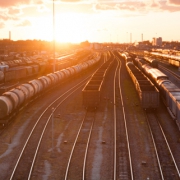LNG, CNG and electric vehicles – what’s doing what
I cannot remember how many times I had the issue on the table. What’s better? CNG or LNG?
My answer is simple – none. Each one of them serves a different purpose and hence, they cannot really be compared. They do coexist in a way.
But when we already talk about mobility, I would like to throw another contender in – electric vehicles as they roam the same streets and compete for the same motorists. Once again, only theoretically.
LNG and CNG are the same substance. Taken apart into its constituent pieces, both would be mixtures of gasses with a very heavy methane count. This is what we really care about.
But why the different names if both are chemically identical?
Natural Gas is very bulky as any gas normally is. This means up it takes a lot of room. This also means that in its gaseous form, Natural Gas is not very energy dense as only a few molecules would be able to occupy a given space as compared to iron for example.
Vaporize iron and it would expand as well. In order to solve the dilemma and get some more oomph into some confined space, pressure is increased. That immediately reduces the space requirements of the gas enormously.
But it comes with a hitch. First, a pressure-resistant container is needed and the more the pressure mounts (i.e. the more gas you want to get into the same space), the thicker the container wall would have to become as otherwise the pressure would make the container burst spilling its contents.
This is a receipt for very heavy containers as with wall thickness also the weight increases. Plus, it needs power to push all this gaseous matter into the small space. Compression becomes more energy intensive, the higher the pressure required is. Very low pressures can be achieved with your lungs. But already at more than one bar, you feel the limits of this approach. A regular pump for a car wheel would provide single digit bars of pressure.
CNG containers (for Compressed Natural gas) would have to withstand a whopping 200 bars and the compressors filling them would have to be a bit bigger than your good old tire pump.
Last but certainly not least, it takes time to fill a container with compressed gas and the range of the vehicle running on it will certainly be in the city zipper area rather than the realm of the Marathonists.
LNG on the other side is just the same old Natural gas, but it has been cooled down to minus 161 degrees Celsius when it drops liquid at atmospheric pressure. As a liquid, it looks much like water as its odorless and colorless.
Liquefying the gas does not alter its chemical structure which means that when one turns it back into a gas, he just has back what he had before – Natural Gas.
But liquefying it also reduces the volume of the gas by a factor of about 600 which means that a simple container that would only have to be shielded from outside temperatures, would be able to contain 600 times as much gas as it would be able to contain Natural Gas.
Appliances and engines running on LNG are strictly the same as those running on CNG as before use, the liquid is warmed and turned back into a gas.
So the vital difference in using LNG instead of CNG is that you need a different tank and something for regasification (which is about as technically complex as a kitchen sink).
But LNG comes with a couple of inestimable advantages. First, it’s very dense and hence is very similar to diesel in the energy to volume ratio. This also means that a tank just slightly larger than a diesel tank would get you the same mileage like diesel with is great news to the long distance vehicle drivers.
Also, as there is no pressure (in fact LNG tanks are being kept under low pressure of about 8 bars in order to limit effects from boil off) those tanks are pretty light. And refilling the tank is just about as painless and quick as a diesel tank.
But here again, there is a glitch. LNG is a cryo-liquid which means that it is very cold and however much someone tries to shield it from the outside world that must seem to it like the eternal hellfire, it is constantly boiling and hence constantly loses a small portion of LNG to this boil off. We call this very cold gas BOG or Boil Off Gas. Although total volumes of BOG are very small, basic fuel management is still required. Nothing, that a simple board computer could not easily deal with.
An engine running on LNG is exactly identical to the CNG engine as the gas would first be regasified before being burned in the engine. CNG also needs to be depressurized. LNG is for those with long-distance requirements and/or those who need to refuel quickly and in a short sequence.
Last, the electrical vehicle is the darling of the political green movement as it theoretically does not cause any emissions. This may be debated as electricity also needs to be produced somehow but the real problems are charging and range. You don’t go far with an e-zipper and it hangs for quite a while on the zapping station. Not good for quick logistics.
LNG, CNG, and electricity all serve different purposes. While very small city zippers best run on electricity and the heavy haulers and distance junkies will need LNG in order to run smoothly – the space in between is reserved for CNG. This is true for city transporters or refuse trucks or town cars. There will always be overlap between the different modes of transport and the fuels but it’s going to be minimal. LNG, CNG, and electricity each occupies their virtually exclusive space. It’s not one or the other. It’s each for its own use.














Leave a Reply
Want to join the discussion?Feel free to contribute!